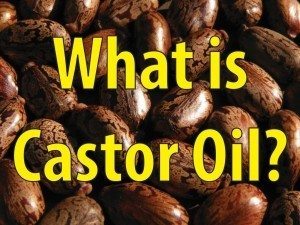
Castor Motor Oil: A Brief Introduction
Castor motor oil was once the undisputed king of motor oils. It proved to be a shining star in a sea of inferior quality crude oils and was commonly used in not only combustion engines but transmissions as well. But besides being popular motor oil, do you know much else about this oil that comes from a plant?

In this article, we’re going to get into castor oil to find out exactly what it is, how it came to be used in combustion engines, and a few of its most significant advantages and disadvantages.
What Is Castor Oil?
Castor oil is derived from the seeds of the… you guessed it… castor oil plant. Its appearance can range from a pale yellowish color to colorless. Its boiling point is a whopping 595°F (313°C)!
It’s first known use dates back to around 4000 B.C., where the Egyptians used it to fuel their lamps. Cleopatra herself was known to have used it uniquely – to help brighten the whites of her eyes.
Since then, castor oil has gone on to be used in more practical ways. Besides being used as motor oil and premix, castor oil has also been used as:
- A food additive and preservative
- Laxative
- Skin ulcer ointment
- Antifungal ointment
- The main ingredient in cosmetic products
- Feedstock for biodiesel
But of course, we’re more interested in how it became a premium motor oil for combustion engines. So how did that come to pass?
How Castor Motor Oil Came To Be Used in Combustion Engines
Throughout all of its years in existence, castor oil did not find its way into an engine until the start of the First World War in 1914.

Airplane production significantly increased as a result of the war. Engineers were looking for ways to make the planes lighter while increasing available space. Naturally, that led to an inspection of the planes’ engine. And as a result, the radial engine was born and equipped on the aircraft of that era.
However, there was one problem. The radial engines were designed in a way that they relied on oil splashing around the crank chamber and then removing itself from the engine via the exhaust to work correctly. There existed no built-in mechanism that was able to make this happen, and other oil types were too heavy to be reliable.

Nature To The Rescue
Enter the castor bean oil. It became the premier oil used in these radial aircraft engines. It’s from this moment in history that the castor oil craze began to spread throughout the world.
Since its introduction as a combustion engine oil, castor oil has gone on to be regarded as one of the most prolific types of motor oils in history. Among high-end lubricant manufacturers such as Maxima Lubricants, the legacy of castor based oils continues.
However, over the years, other oils, such as minerals and synthetics, have been introduced that provide clear advantages over castor oil. That being said, castor oil does possess its own unique set of benefits.
The Biggest Advantages
- Castor oil will not carbonize at high temperatures (over 700F)
- Castor oil has a high film strength, which helps prevent metal-to-metal contact between points on an engine. This makes castor motor oil an excellent racing lubricant for high-performance engines.
- Castor oil does not “adapt” to its surroundings. Meaning, it stays in its current form regardless of climate, temperature, location, etc.
- Castor oil has a natural attraction to heat. It will actively seek out the hottest spots in an engine.
- Castor oil puts off an incredible smell. A small that has acquired considerable fame ever since the first use in the early 20th century.
The Biggest Disadvantages
- Castor motor oil is well known for leaving large “gunk” deposits behind on engine parts.
- In premium fuel, castor oil may separate from the fuel in low temperatures.
- Oil injection systems and castor oil don’t mix (pun intended).
While castor oil may have lost some of its prestige over the past few decades, it is still prominent and widely used today by motocross and enduro riders due to its high film strength. Regardless of what the future holds for the use of castor oil in motors, there is no denying the critical role it has played over the years in the world of combustion engines. The fact that castor oil still around is a testament to the impact it’s had on the industry.
If you have any questions or anything to add, please leave them in the comments or on our FaceBook page!
Keep Reading – Is Biodegradable Oil Worth The Effort?
